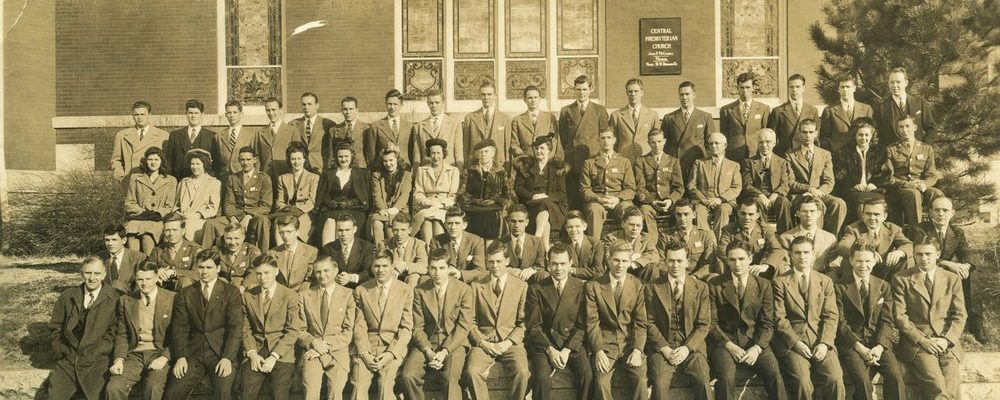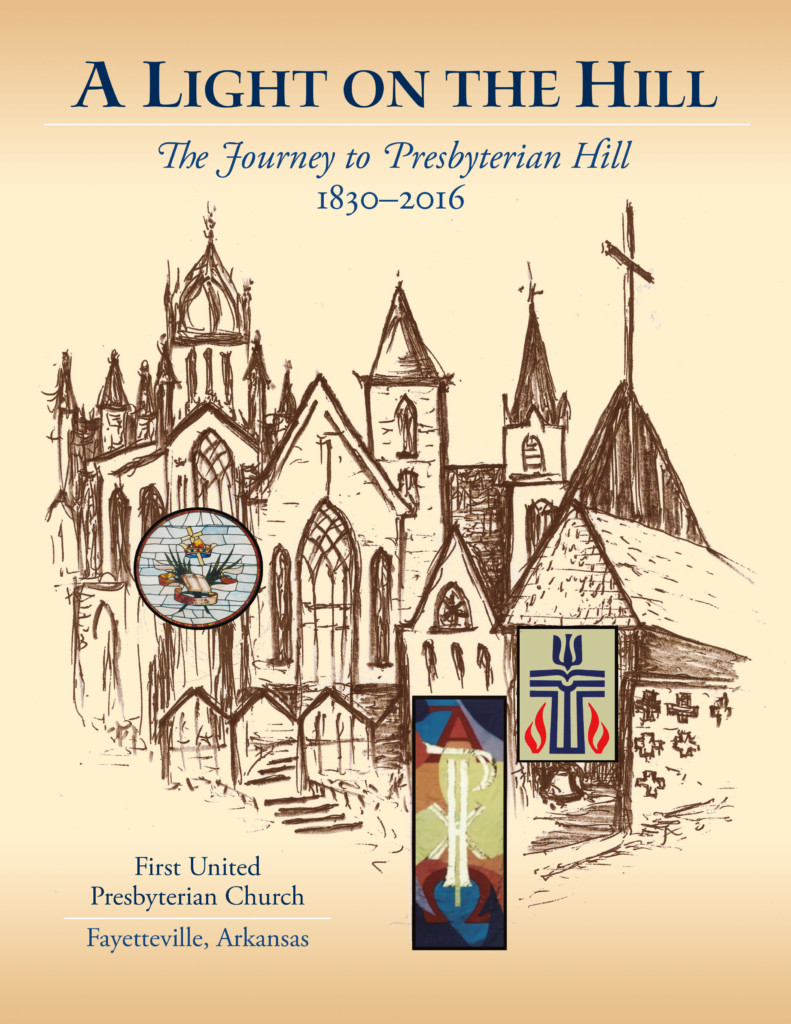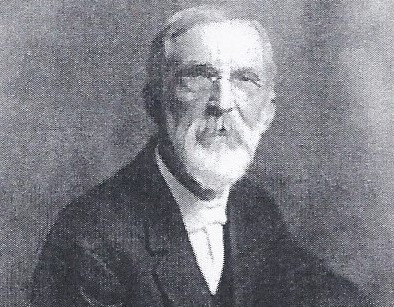History of the Church
Timeline of First United Presbyterian Church – Fayetteville, Arkansas
 |
1830 Early settlers met with the Reverend Andrew Buchanan to form Fayetteville’s first church, the Cumberland Presbyterian Church of Fayetteville. Early worship services were held in the blacksmith’s shop of a member. |
 |
1840-1873 Reverend John Buchanan, nephew of Andrew Buchanan, served the church as a circuit-riding preacher, evangelist, and pastor for over 30 years, returning whenever needed to ensure the congregation’s stability. |
 |
1862 A modest brick church was built with volunteer labor at a cost of $2,500 at 229 Block Street. This building was used for Federal quarters during the Civil War. (The building in the picture is a typical brick Cumberland church from the period). |
 |
1863 Confederates burned down the church building, and all records were lost in the fire. |
 |
1867 The congregation reorganized, rebuilt after the fire, and provided three moderators for the Cumberland Presbyterian Church’s General Assembly. |
 |
1873 The recently formed “Southern Church” (Presbyterian Church U.S.) organized a new and separate First Presbyterian Church of Fayetteville. |
 |
1874-1902 The first P.C.U.S. pastor, Reverend Samuel Wilson Davies, was called to the First Presbyterian Church. A sanctuary was dedicated on the corner of College Avenue and Spring Street. The lot and building cost $1750. As the community grew, Rev. Davies faithfully led the church to stability, as it became a significant influence in the community. |
 |
1904 First Presbyterian built a new brick church. The original frame structure was moved to South College Avenue, where the sanctuary became the White Chapel mission, which continued to serve the community in south Fayetteville until 1939. |
 |
1906 The congregation of the Cumberland Presbyterian Church followed the main body of the Cumberland denomination in reuniting with the “Northern Church” (Presbyterian Church U.S.A.), and became the Central Presbyterian Church. Shortly before the merger, a new sanctuary and educational rooms were completed at the corner of Dickson and St. Charles Streets, the present site of the U.S. Post Office. |
 |
1951 Central Presbyterian and First Presbyterian combined student ministry work at the University of Arkansas with the full cooperation of their respective synods. Westminster House formally opened in February of 1951. African American students at the University of Arkansas Law School were welcomed as participants. |
 |
1953 The two congregations federated (combined) with the name First Presbyterian Church. By 1956, the separate boards had merged to form a single congregation under the governance of the “Northern Church.” |
 |
1954 Members of First Presbyterian Church in positions of community and school leadership actively supported the integration of Fayetteville High School. |
 |
1958 The Presbyterian Church U.S.A. united with another smaller Presbyterian body (the United Presbyterian Church) to form the United Presbyterian Church in the U.S.A. Reflecting its history of uniting with related church bodies for shared ministry and mission, the local congregation used this occasion to adopt its present name: The First United Presbyterian Church of Fayetteville. |
 |
1960 In joy and prayer, the congregation broke ground on Nov. 20 for the present church building. |
 |
1961 The congregation moved to the beautiful hilltop in July. The church campus on “Presbyterian Hill” included a fellowship hall with classrooms and a small kitchen, an office building, and an additional education building. The church worshiped in the Fellowship Hall. |
 |
1970 In 1970, the current sanctuary was completed. |
 |
1995 The sanctuary configuration underwent renovations by adding a dais, changing the carpet from gold to red, and adding several ranks of exposed pipes to the organ. |
 |
2000 An ambitious expansion and renovation effort added 14,930 square feet to the church, bringing the total footage to 42,825 square feet. During this period, the church’s mission statement became “a Light on the Hill.” In 2003, the congregation, mindful of past and present servants who built for future generations, joyfully dedicated the updated campus to the glory of God. |
 |
2010 The church began an exciting new season of its ministry and outreach as Co-Pastors Jan and Phil Butin began service as a clergy couple. They were installed in a joyful celebration on April 18, 2010 and served until June, 2024. |
 |
2014 A successful capital campaign with a $500,000 goal received almost $600,000 in contributions, enabling the church to eliminate its debt and make a variety of needed improvements including a substantial organ renovation.Campaign receipts also funded a new long term mission outreach in Honduras, in partnership with Presbyterian mission co-workers there and other Presbyterian congregations of Northwest Arkansas and around the United States. The initiative provides solar power for water purification in remote villages, as well as sustainable community development and support of Presbyterian outreach and new church development. Vital connections with Honduran Presbyterians provide two-way strength for living together before God and serving one another in love. |
 |
2018 A generous gift from the estate of Kenneth and Eva Stalker enabled the church to accomplish a long-anticipated renovation of the sanctuary area, including a covered patio, a generous gathering area including a coffee bar, improved lighting, projection, and livestreaming capability. Thanks be to God, when the church was called upon to adapt our worship ministries to the COVID-19 pandemic, we were ready! |
 |
Throughout our years of service in Northwest Arkansas, the changing face of the church has continually served the local community in Christ’s name. The University of Arkansas Infirmary, United Campus Ministry, Butterfield Trail Village, Richardson Center, Cooperative Emergency Outreach, Creative School, Yellow Brick House, Boy and Girl Scout Troops, Habitat for Humanity, Life Styles, and First School are a few examples of institutions and ministry initiatives benefiting from Presbyterian leadership and active volunteers. In the wake of Hurricane Katrina, multiple mission trips by adult and youth members helped with the needed community restoration. Each summer, church youth pursue mission in various under-resourced areas of the United States through Reach.
No doubt in part due to its location in a university community, First United Presbyterian Church has had the privilege of nurturing an exceptional number of members in responding to God’s call to full-time Christian ministry, including a remarkable number of women. Our current church vision reflects our long-term mission of being “a light on the hill” for Fayetteville and Northwest Arkansas: “Reaching out as a visible expression of God’s grace, we will meet people where they are, inviting all into Christ’s family through engaging worship, fellowship, learning, and service.” This new vision builds on FUPC’s remarkable history of uniting with other Presbyterian movements and denominations in worship, ministry, and mission, as distinct streams of Reformed faith come together for a stronger and more visible Christian witness. You can order the church history book, A Light on the Hill, online. |



